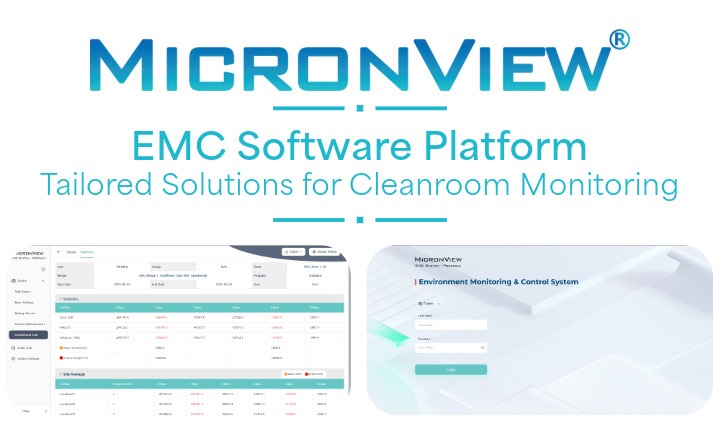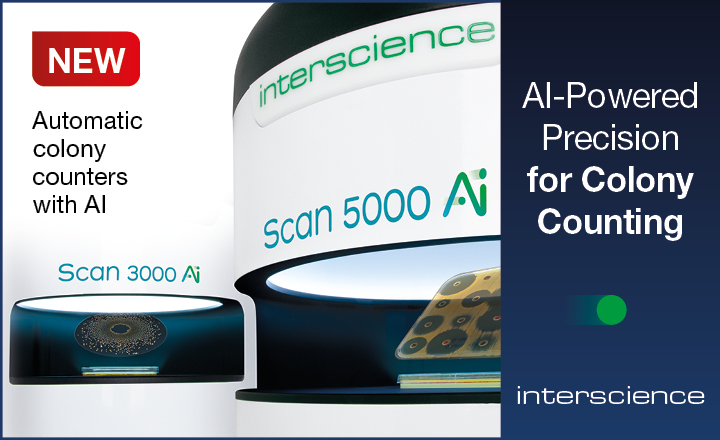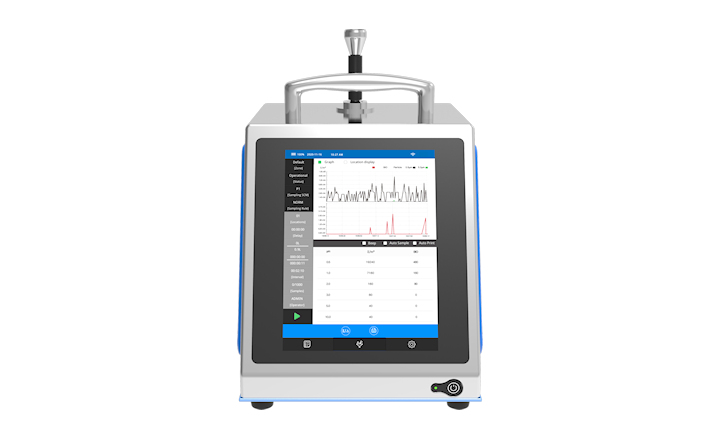Pharmig's Annual Conference was a virtual gathering again this year due to COVID-19, but thanks to modern technology microbiologists from near and far away places were able to dial-in and hear experts discuss hot microbial-related topics in the pharmaceutical, healthcare, and cosmetic and personal care sectors.
The conference, now in its 29th year, is always a social gathering, and kept up with this tradition online with a good mix of both questions and discussion between presenters and guests, encouraged and facilitated by hosts: Maxine Moorey (Pharmig's Director), David Keen (Pharmig's Chairman), and Dr Tim Sandle (Pharmig member). Below are some of the highlights over the 4-day conference.
Next-generation sequencing for strain-to-strain comparison and differentiation - Vicky Warren (Identification Services Manager, NCIMB Ltd)
Next generation sequencing technology (NGS) can provide in-depth knowledge of a single strain much more quickly and economically than the alternative method, Sanger sequencing, which is why whole genome sequencing using NGS is now NCIMB’s preferred method for strain-to-strain comparison, says Vicky Warren, Head of NCIMB’s Sequencing and ID services.
NCIMB Ltd look after the UK’s National Collection of Industrial, Food and Marine Bacteria, as well as providing a range of microbiology, analytical and storage services. Their ID department identifies thousands of environmental isolates every year, many of which come from the pharma industry. At a previous Pharmig conference, NCIMB surveyed visitors to their stand and revealed that although strain-to-strain comparison was important to Pharmig members, few who responded to the survey knew about the different methods available, hence the reason for this presentation.
NCIMB is often asked to undertake strain to strain comparison for pharma customers, when they need to undertake an investigation following a contamination event. For example, suppose there were two or more isolates from the same species. In that case, a strain-to-strain comparison could identify that they were actually two different strains – indicating a possibility of more than one source of the contamination.
Comparing whole genome sequences is a very straight forward way of determining if two isolates of the same species are in fact the same strain, as any differences in the sequences can easily be identified. However, in the past, this was not a viable option, as the work would have taken months to complete. The adoption of a next generation sequencing approach means that the sequencing required can now be done in a single day, and at a lower cost, paving the way to more thorough investigations, with quicker results.
Investigation of contamination events is not the only application of this technology within the pharmaceutical sector. It can also be used to check for strain drift within industrial strains (to check for mutations in a working strain; to make sure if the right strain is being used; in detecting patent infringement; or to detect AMR and virulence genes in probiotics. Visit NCIMB.com
Annex I Latest Updates - Alan Moon (Senior GMP Inspector, MHRA)
As the UK's representative on the working group for the revision to Annex I, Alan had some new updates to share and reassured the audience the new version's publication was in sight. He also used this opportunity to answer some of the comments stakeholders had submitted to the EMA Inspectors Working Group, asking for changes in the Annex I text. For instance, some suggestions sent to EMA asked for a clearer distinction when referring to RABS and isolators. There were also a number of comments relating to consistency of terminology use, for example when pyrogens and endotoxins are mentioned in the text. Alan confirmed both of these requests are being dealt with, along with all of the other comments received being taking into consideration by the working group. There were also concerns that the latest draft is a barrier to new rapid/alternative technologies, but Alan said it wasn't its intention and that in no way should the real examples used in the Annex I text to be considered a "be all and end all" of technologies. He stressed, however, that, as always, new technologies should demonstrate equivalency to current validated methods. Visit MHRA's website
Virucidal efficacy testing – Neil Simpson (Technical and R&D Manager, Contec)
For staff safety and to prevent transmission of SARS-CoV-2, employers increased their use of disinfectants in the general workplace. Pharmaceutical companies were no exception. Neil Simpson, Contec Inc, with over 20 years experience in the contamination control industry , gave an educational presentation on what pharmaceutical companies needed to consider with regards to virucidal disinfectants both for their cleanrooms and outer areas. He discussed, how to approach a virucidal disinfection study, and why some viruses are more resistant to disinfectants than others.
One thing Neil wanted to clear up was that in regards to lifescience cleanrooms, regulators don’t expect to see viruses included as part of an environmental monitoring programme, as because they are obligate parasites it is not possible to monitor them using traditional EM techniques.
Neil discussed how the different types of virus are more or less resistant to disinfectants, with small non-enveloped viruses like polioviruses being most resistant, almost as difficult to kill as bacterial spores. Unlike enveloped viruses, such as SARS-CoV-2 which are easily neutralised when the disinfectant damages its lipid envelope. This means that the usual daily routine of mopping with alcohol and standard broad-spectrum disinfectants in a lifescience cleanroom will prevent SARS-CoV-2 from persisting on the cleanroom surfaces.
Virucidal efficacy testing requires expertise and is very different from disinfectant testing for bacteria, fungi or bacterial spores. It can be more time consuming and therefore more expensive than standard disinfectant testing, and usually requires a specialist testing laboratory.
BS EN 14885:2018 is a European Standard which covers the “Application of European Standards for chemical disinfectants and antiseptics.” It lists three virucidal tests (EN 14476, EN 14675, and EN 13610), which can be used to demonstrate a disinfectants virucidal effectiveness. There is also a surface test; BS EN 16777:2018 which is more recent and not yet include in EN14885.
On a final note, Neil shared responses from some multi-national pharmaceutical companies and the MHRA, regarding any potential changes which a company needed to implement because of SARS-CoV-2. The MHRA stated that they wouldn’t expect to see any changes within the cleanroom environment, this was confirmed by the pharmaceutical companies but most companies were increasing the level of disinfection they carried out in their common areas. Visit Contectinc.com
Controlling Burkholderia cepacia - Don Singer (ECOLAB Senior Microbiology technical Consultant North America, and Chair for USP General Chapters)
The term 'objectionable microorganisms' is always top of the agenda at Pharmig meetings, and the audience was fortunate to have Chair of USP General Chapters, Don Singer, give his presentation in controlling Burkholderia cepacia, gram-negative motile bacilli, that has the potential to cause serious harm to patients.
Burkholderia cepacia complex (BCC) includes over 20 species that live in soil and water, which are sources of raw materials in products, and therefore can easily end up in a production process. For example, B. cepacia is known to live in biofilms in water pipes, and can be sloughed off during cleaning and end up in final product, which is why validating and maintaining the water system is vital in controlling the organism, said Don.
The USP Chapter <1111> relates to objectionable microorganisms and is harmonized across international pharmacopeia. Don emphasized how important it is to follow the risk assessment guideline for potential objectionable microorganisms in this chapter when an organism is recovered. For example, does your product support the growth of this organism and who is the intended recipient of your product, i.e., risk will be different for neonates, infants, and the debilitated.
BCC was given a dedicated chapter instructing how to detect these organisms (USP chapter <60>). The media ingredients listed in this chapter are the same across all suppliers. Still, Don says that each supplier will have approached it differently using dyes or chromogenic media, but to make sure they adhere to pharmacopeia requirements. Visit ECOLAB.com
Using AI for Quality Control in Practice - Louis Ryan (Engineering Director, ASH Technologies)
Ash Technologies’ Director of Engineering Louis Ryan believes that artificial intelligence with deep learning is the future in colony counting and highlighted how many microbiologists’ hours are lost to this practice when their training and expertise could be better utilized.
Ash Technologies design and develop digital microscopes and inspections systems for quality control. They’ve also developed machine learning algorithms to enhance images of agar plates that allow a clear distinction between CFUs.
During the presentation, an audience poll was taken on problems encountered when performing colony counting. Results showed a majority voting that CFU overlap to be the main challenge. Louis demonstrated how an automated colony counter with machine learning could overcome this.
The company has 12,000 inspection and digital imaging solutions currently being used at sites around the world. They are now working on different algorithms that will allow genus classification based on colony morphology characteristics, highlight objectionable organisms on an agar plate, and automatic highlighting of CFU types that have not been seen in the environment before. Visit Ashvision.com
The Future of Pharmaceutical Environmental Monitoring – what are the challenges? Hamish Hogg (Microbiology product specialist, Cherwell Laboratories)
Understanding the environment, you're monitoring will enable you to choose the most suitable methods to capture all the data you need for your environmental monitoring (EM) program and comply with EU GMP Annex I risk assessment requirements. This approach is known as a 'Holistic approach' and, according to experts at Cherwell laboratories, that provide technical advice to clients working in Grade A cleanroom environments, is how EM programs should be approached in the future.
There are significant changes to EM coming with the new Annex I, specifically regarding continuous monitoring. For example, the next version will now state zero CFU as the target for Grade A compliance, removing the ambiguity and confusion that previous version's "less than one CFU" stipulation caused.
The experts at Cherwell have identified that Annex 1 states that monitoring should be undertaken for the entire duration of critical processing, this is referred to as ‘continuous monitoring’. Knowing how versatile your air samplers are, and their capabilities is also a major factor in achieving this. It is a fact that D50 values, differ between air samplers, and operators should make sure their air sampler's value complies with the 1-micron limit stated in Annex I.
Furthermore, using the correct methods for the area you're monitoring is particularly important in terms of expenditure, not only relating to the cost of the solution and consumables, but also ensuring that the right method is identified and used to mitigate the risk of contamination, which in turn would have a potential cost to the business. These factors if considered, could have a significant effect on the economics associated with environmental monitoring.
Summarizing, Cherwell experts emphasized that matching your methods to your facility, as most sites will differ in what they can implement, and the importance of using your data to review what's working and what's not. Visit www.cherwell-labs.co.uk
For information on more Pharmig events, please visit www.pharmig.org.uk
















